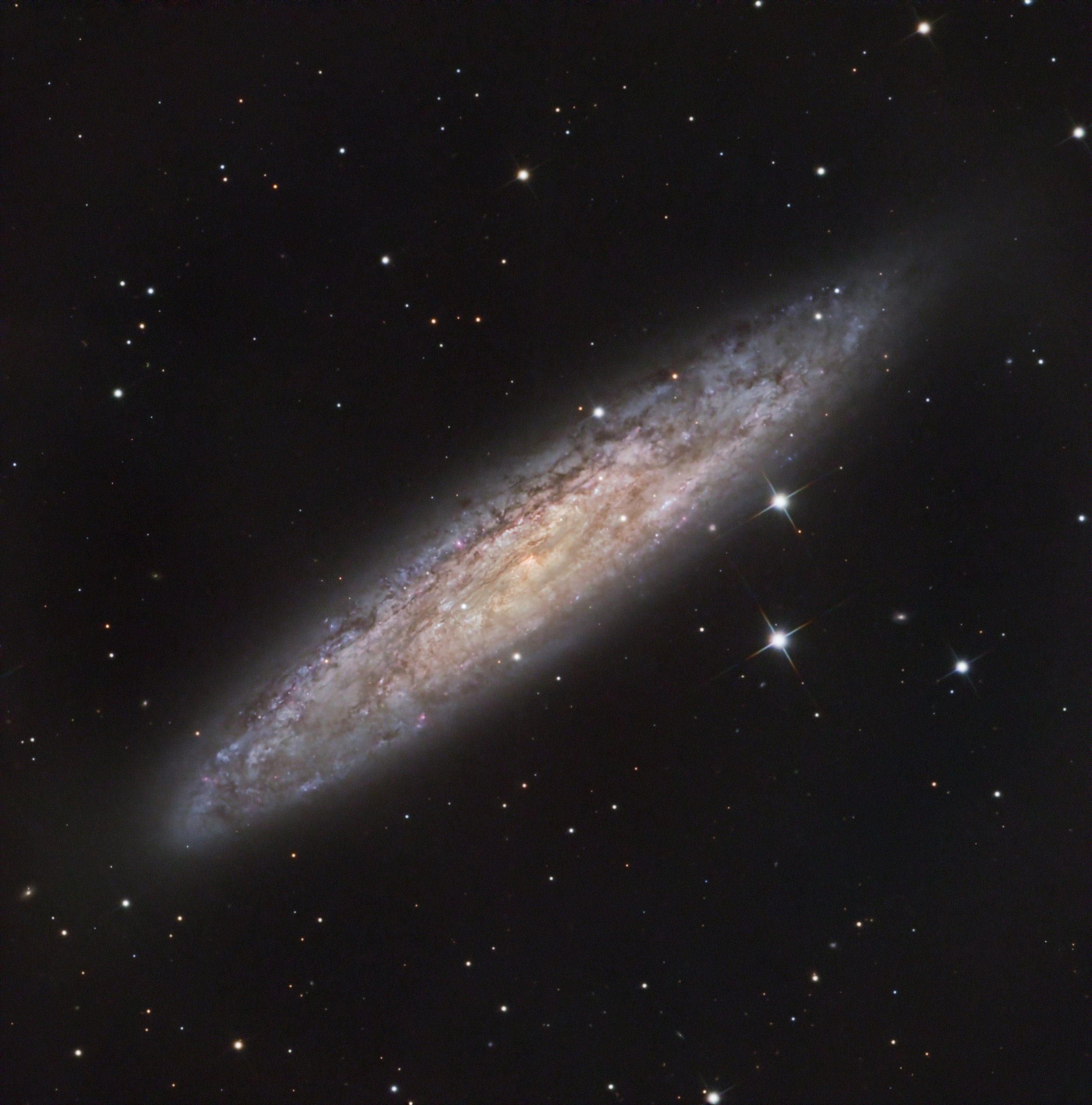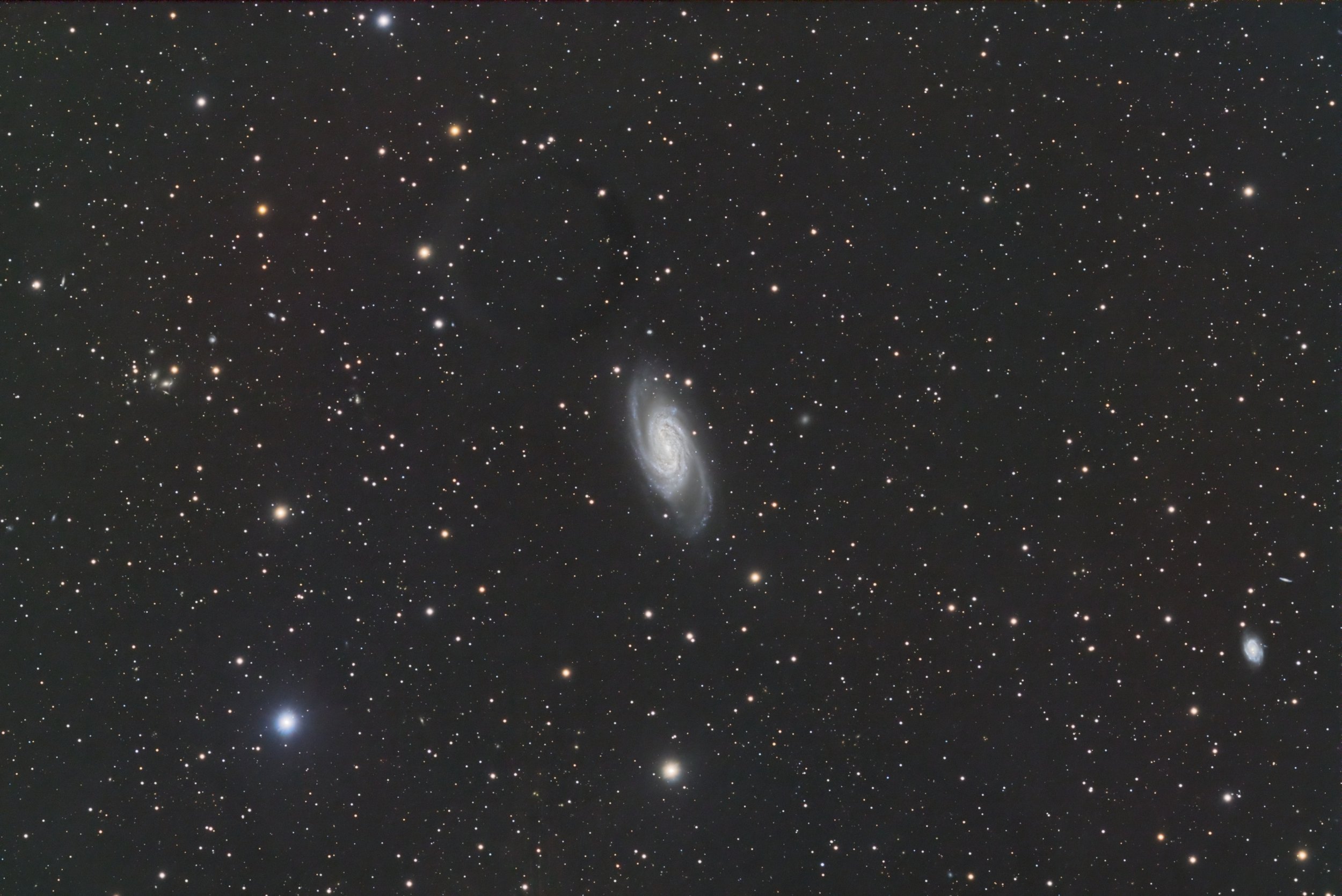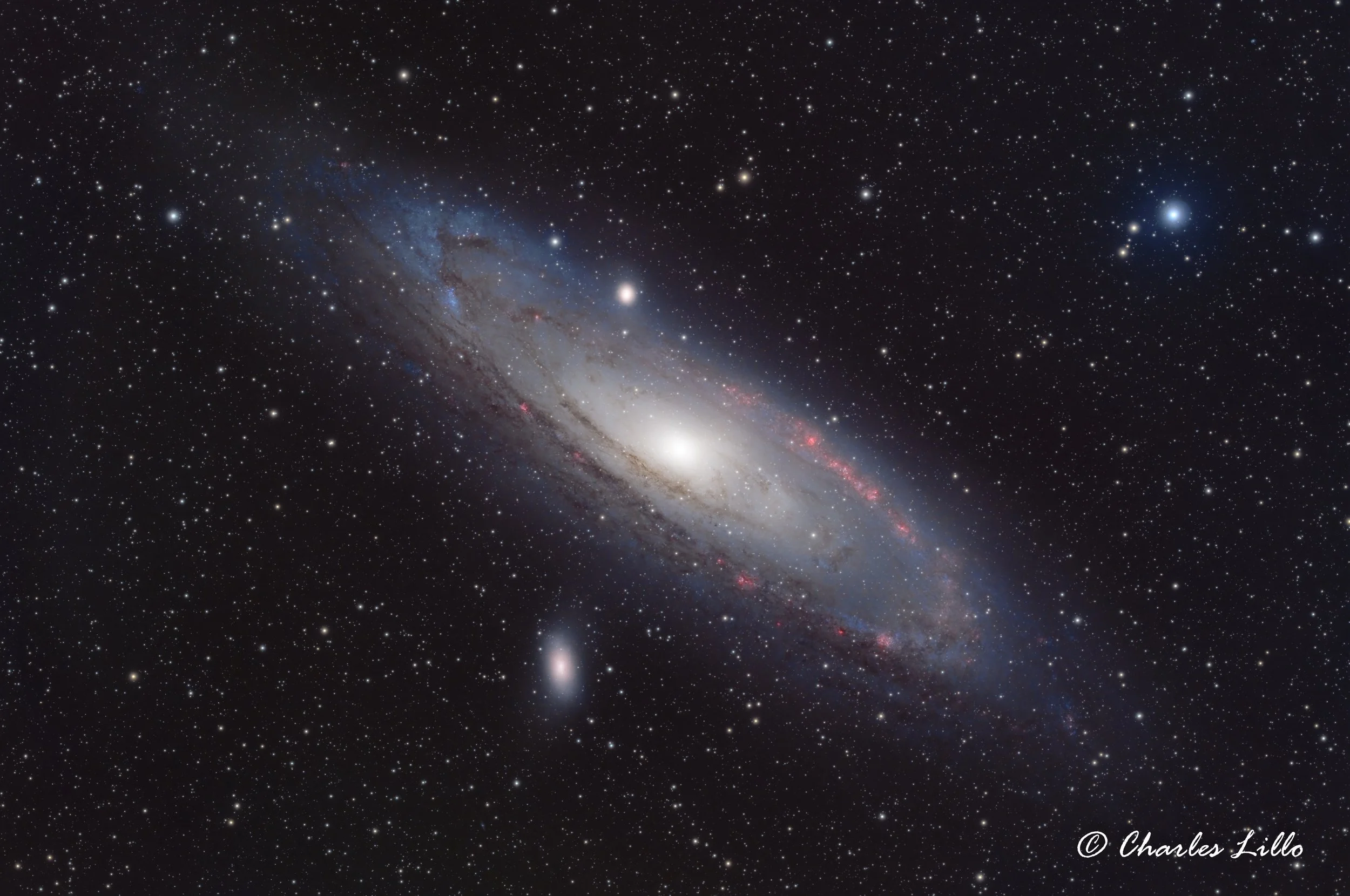Exploring the Sculptor Galaxy: A Hidden Gem of the Southern Sky

Last night was one of those perfect nights for astrophotography—cool, clear, and brimming with potential. I decided to focus on the Sculptor Galaxy (NGC 253), a stunning spiral galaxy located in the constellation Sculptor. Using my QHY533 mono camera paired with Optolong filters and my Carbon Star Ritchey-Chrétien telescope at 1377mm focal length, I captured about 5 hours of LRGB data. My trusty AM5 mount kept everything steady, allowing me to tease out the galaxy's intricate details.
The Sculptor Galaxy is often overshadowed by more famous spirals like Andromeda or the Triangulum Galaxy, but it’s a fascinating target in its own right. Sitting about 11.4 million light-years away, NGC 253 is one of the brightest galaxies visible from Earth. Its relatively close proximity and face-on orientation make it a favorite for amateur astronomers and professionals alike.
Here are some lesser-known facts about this galactic beauty:
Starburst Activity: NGC 253 is classified as a starburst galaxy, meaning it's undergoing an intense period of star formation. The activity is concentrated in its core, where supernovae explosions and young, massive stars sculpt the region into an astrophysical playground.
Discovery History: Caroline Herschel, a pioneering female astronomer, discovered NGC 253 in 1783. She was not only the first woman to discover a comet but also contributed to the cataloging of deep-sky objects like this galaxy.
Dusty Personality: Often called the "Silver Coin Galaxy," NGC 253 is rich in dust lanes that crisscross its spiral arms, giving it a textured appearance. This dust plays a significant role in the formation of stars and planets within the galaxy.
Potential Black Hole: Observations have hinted at a supermassive black hole in the galaxy's nucleus. This, combined with its active star-forming regions, makes NGC 253 a dynamic subject for scientific study.
The data I gathered will require some heavy lifting in processing, but I’m eager to see the fine details emerge. With tools like BlurXTerminator and NoiseXTerminator, I aim to bring out the galaxy's vibrant star-forming regions and intricate dust lanes.
This was my first attempt at capturing NGC 253 in mono RGB, and the cool night air and crisp skies made it an unforgettable session.Last night was one of those perfect nights for astrophotography—cool, clear, and brimming with potential. I decided to focus on the Sculptor Galaxy (NGC 253), a stunning spiral galaxy located in the constellation Sculptor. Using my QHY533 mono camera paired with Optolong filters and my Carbon Star Ritchey-Chrétien telescope at 1377mm focal length, I captured about 5 hours of LRGB data. My trusty AM5 mount kept everything steady, allowing me to tease out the galaxy's intricate details.
The Sculptor Galaxy is often overshadowed by more famous spirals like Andromeda or the Triangulum Galaxy, but it’s a fascinating target in its own right. Sitting about 11.4 million light-years away, NGC 253 is one of the brightest galaxies visible from Earth. Its relatively close proximity and face-on orientation make it a favorite for amateur astronomers and professionals alike.
Here are some lesser-known facts about this galactic beauty:
Starburst Activity: NGC 253 is classified as a starburst galaxy, meaning it's undergoing an intense period of star formation. The activity is concentrated in its core, where supernovae explosions and young, massive stars sculpt the region into an astrophysical playground.
Discovery History: Caroline Herschel, a pioneering female astronomer, discovered NGC 253 in 1783. She was not only the first woman to discover a comet but also contributed to the cataloging of deep-sky objects like this galaxy.
Dusty Personality: Often called the "Silver Coin Galaxy," NGC 253 is rich in dust lanes that crisscross its spiral arms, giving it a textured appearance. This dust plays a significant role in the formation of stars and planets within the galaxy.
Potential Black Hole: Observations have hinted at a supermassive black hole in the galaxy's nucleus. This, combined with its active star-forming regions, makes NGC 253 a dynamic subject for scientific study.
The data I gathered will require some heavy lifting in processing, but I’m eager to see the fine details emerge. With tools like BlurXTerminator and NoiseXTerminator, I aim to bring out the galaxy's vibrant star-forming regions and intricate dust lanes.
This was my first attempt at capturing NGC 253 in mono RGB, and the cool night air and crisp skies made it an unforgettable session.
I’ve been a dedicated to Squarespace fan for 20 years. Love the product, people and company.





